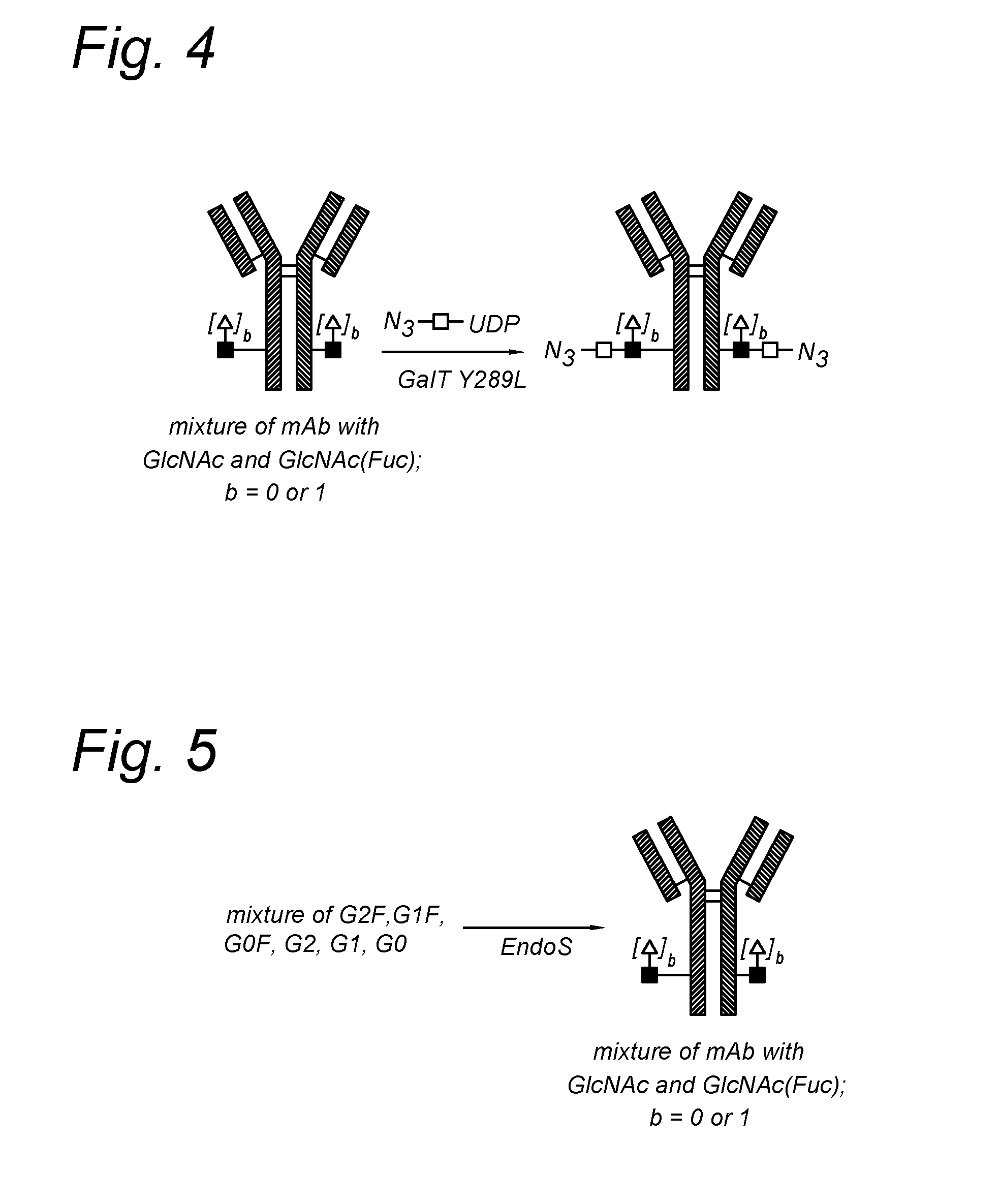Modified antibody, antibody-conjugate and process for the preparation thereof
a technology of modified antibodies and conjugates, which is applied in the field of modified antibodies, can solve the problems of low site control of conjugation, inability to achieve the effect of reducing the number of conjugates, and releasing linker-toxins from antibodies,
- Summary
- Abstract
- Description
- Claims
- Application Information
AI Technical Summary
Benefits of technology
Problems solved by technology
Method used
Image
Examples
examples
Synthesis
examples 1-4
Synthesis of BCN-Doxorubicin 28a and 28b
[0374]The reaction scheme of the synthesis of linker-conjugate BCN-doxorubicine 28a starting from BCN-OSu 23, as performed in Examples 1-4, is shown in FIG. 7.
example 1
Synthesis of BCN-Amine 24
[0375]To a solution of 2,2′-(ethylenedioxy)bis(ethylamine) (11.78 mL, 80.5 mmol) in DCM (200 mL) was added BCN-OSu 23 (7.82 g, 26.8 mmol) in DCM (100 mL) dropwise over 3 h. After complete addition the mixture was stirred for 10 min followed by washing with saturated aqueous NH4Cl (3×200 mL). The organic layer was dried over Na2SO4, filtrated and concentrated in vacuo. Flash column chromatography (DCM:MeOH 99:1-93:7+1% Et3N) gave product 24 (5.95 g, 54.7 mmol, 68%). 1H-NMR (300 MHz, CDCl3) δ 5.38 (s, 1H), 4.13 (d, J=8.1 Hz, 2H), 3.59 (s, 4H), 3.56-3.50 (m, 4H), 3.35 (q, J=5.1 Hz, 2H), 2.88 (t, J=5.1 Hz, 2H), 2.32 (br s, 2H), 2.27-2.15 (m, 6H), 1.62-1.42 (m, 2H), 1.33 (qn, J=8.7 Hz, 1H), 0.97-0.85 (m, 2H). 13C-NMR (CDCl3, 75 MHz) δ 156.4, 98.3, 68.7 (2C), 62.2, 45.5, 40.3, 40.2, 28.6, 20.9, 19.6, 17.3. HRMS (ESI+) calcd for C17H28N2NaO4 (M+Na+) 347.1947. found 347.1952.
PUM
| Property | Measurement | Unit |
|---|---|---|
| temperature | aaaaa | aaaaa |
| temperature | aaaaa | aaaaa |
| temperature | aaaaa | aaaaa |
Abstract
Description
Claims
Application Information
 Login to View More
Login to View More - R&D
- Intellectual Property
- Life Sciences
- Materials
- Tech Scout
- Unparalleled Data Quality
- Higher Quality Content
- 60% Fewer Hallucinations
Browse by: Latest US Patents, China's latest patents, Technical Efficacy Thesaurus, Application Domain, Technology Topic, Popular Technical Reports.
© 2025 PatSnap. All rights reserved.Legal|Privacy policy|Modern Slavery Act Transparency Statement|Sitemap|About US| Contact US: help@patsnap.com



